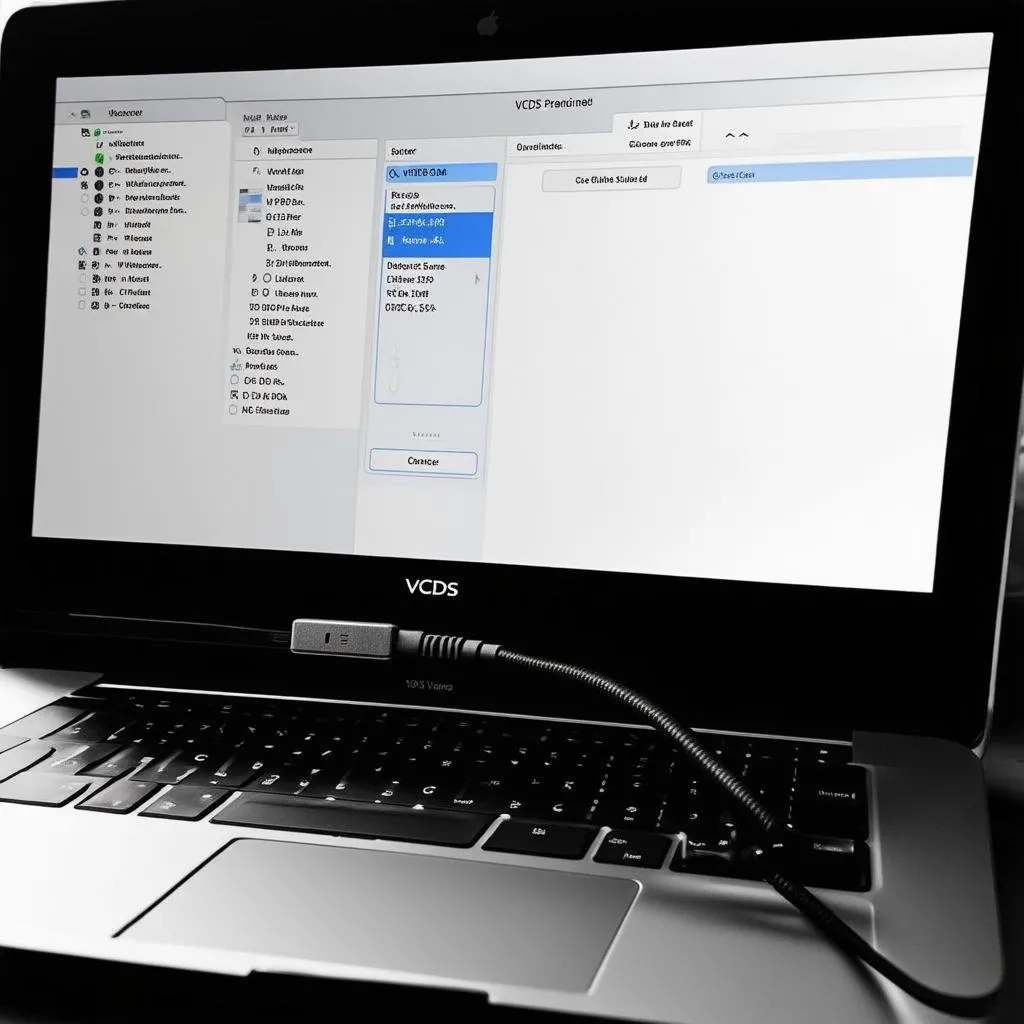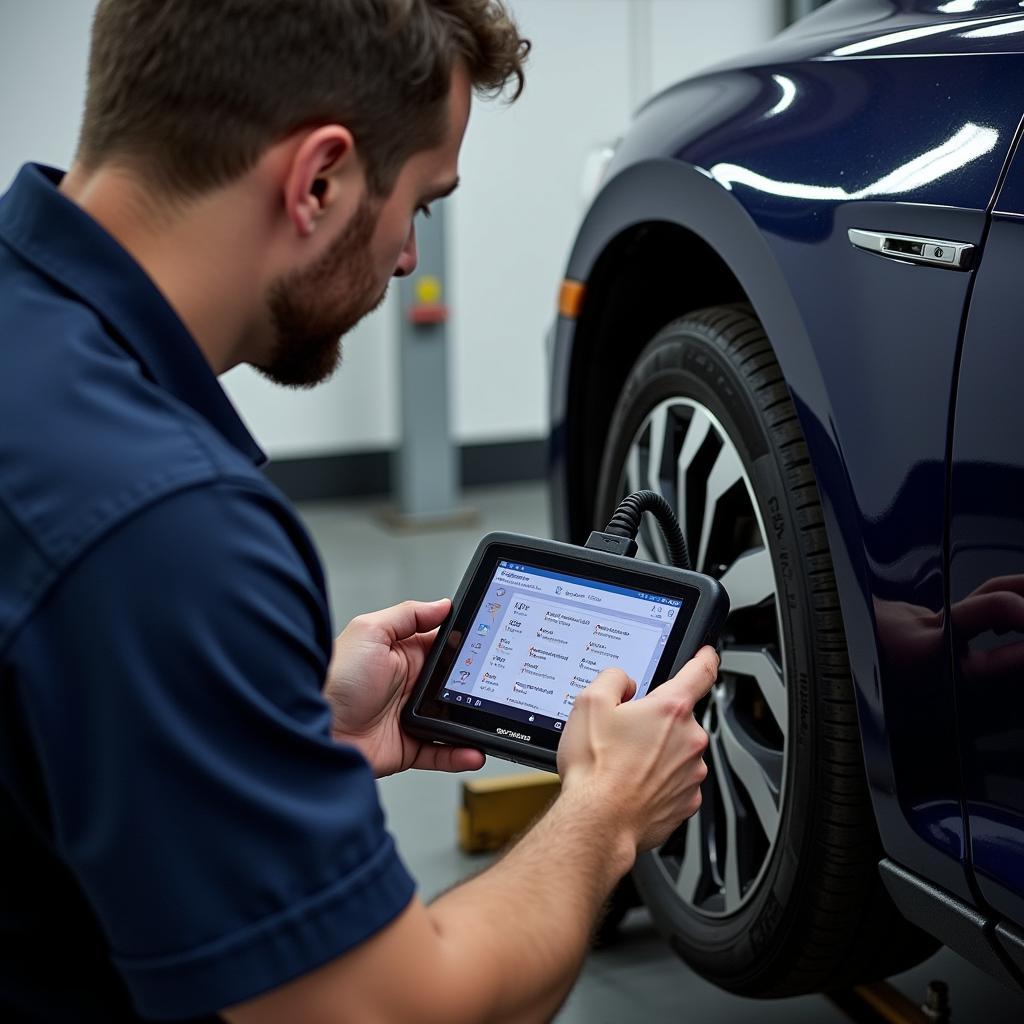VCDS 15.7 is a powerful diagnostic software used by automotive professionals and enthusiasts to troubleshoot and repair Volkswagen, Audi, Seat, and Skoda vehicles. This guide explores the functionalities, benefits, and potential challenges of using VCDS 15.7, providing valuable insights for both beginners and experienced users.
Understanding the diagnostic trouble codes (DTCs) and their implications is crucial for effective vehicle repair. VCDS 15.7 provides a detailed interpretation of these codes, allowing users to pinpoint the root cause of vehicle malfunctions. This software goes beyond simply reading codes; it offers advanced features such as module coding, adaptations, and basic settings adjustments, empowering users to perform complex repairs and customizations. The software’s user-friendly interface simplifies the diagnostic process, even for those unfamiliar with complex automotive systems.
Decoding DTCs with VCDS 15.7
VCDS 15.7 allows you to retrieve and interpret DTCs stored in various vehicle control modules. By understanding these codes, you can identify the specific systems or components causing issues. For instance, a code related to the ABS module might indicate a problem with the wheel speed sensor or the ABS control unit. The software provides detailed descriptions of each DTC, along with possible causes and troubleshooting steps. This comprehensive information empowers users to diagnose problems accurately and efficiently. Remember that while 15.7 is a powerful tool, accurate diagnosis still requires a solid understanding of automotive systems.
Advanced Features of VCDS 15.7
Beyond DTC reading, VCDS 15.7 offers a range of advanced functionalities. Module coding allows users to customize various vehicle settings, such as activating or deactivating specific features, adjusting lighting parameters, and modifying convenience functions. Adaptations enable fine-tuning of control module parameters to optimize vehicle performance and address specific issues. Basic settings procedures are crucial for calibrating and resetting various systems after repairs or component replacements. These advanced features provide a level of control and customization that surpasses generic OBD-II scanners. Similar to [vcds 15.7], other diagnostic tools offer similar features but may lack the specific functionalities and compatibility that VCDS provides for VAG vehicles.
Troubleshooting Common Issues with VCDS 15.7
While VCDS 15.7 is a robust diagnostic tool, users may occasionally encounter issues. Connection problems, compatibility issues with specific vehicle models, or difficulties interpreting certain DTCs are potential challenges. Understanding how to troubleshoot these problems is essential for maximizing the software’s effectiveness. Online forums and support communities offer valuable resources for resolving common issues and learning from other users’ experiences. For example, if you are facing difficulties with [how to install vcds 15.7.0], online resources can provide step-by-step guidance and troubleshooting tips.
What are the system requirements for VCDS 15.7?
VCDS 15.7 requires a compatible Windows-based PC and a stable internet connection for software updates and access to online resources. The software is compatible with various interface cables, including genuine Ross-Tech cables and some third-party options. Ensuring compatibility between your PC, interface cable, and vehicle model is crucial for seamless operation. This is similar to [how to install vcds 15.7.0 en] which also requires specific system requirements.
How to Update VCDS 15.7?
Staying up-to-date with the latest VCDS version is essential for accessing new features, improved compatibility, and bug fixes. Regularly checking for updates and following the recommended installation procedures ensures optimal software performance. Just like with [vcds 15.7 4 crack], it’s important to ensure you are using a legitimate and updated version for best results.
Conclusion
VCDS 15.7 is a valuable tool for anyone working with VAG vehicles. Its ability to read and interpret DTCs, along with its advanced functionalities, empowers users to perform accurate diagnoses and complex repairs. While occasional issues might arise, understanding the troubleshooting process and accessing available resources ensures that you can effectively utilize this powerful diagnostic software. [15.7 1 vcds] can be a valuable resource for further information.
FAQs
- Is VCDS 15.7 compatible with all VAG vehicles? While VCDS 15.7 supports a wide range of VAG vehicles, compatibility can vary depending on the specific model and year.
- Can I use VCDS 15.7 with a third-party interface cable? While some third-party cables might work, it’s recommended to use a genuine Ross-Tech cable for optimal performance and reliability.
- Where can I find support for VCDS 15.7? Ross-Tech offers official support and documentation, along with active online forums and communities.
- What are the key benefits of using VCDS 15.7 over generic OBD-II scanners? VCDS 15.7 offers deeper access to VAG-specific systems and functionalities beyond generic OBD-II capabilities.
- How often should I update VCDS 15.7? Regularly checking for updates and installing the latest version is recommended to ensure optimal performance and compatibility.
- How can I avoid compatibility issues with VCDS 15.7? Researching compatibility with your specific vehicle model and year before purchasing or using the software can prevent potential problems.
- What are some common problems encountered with VCDS 15.7, and how can they be resolved? Connection issues, driver conflicts, and compatibility problems can often be resolved through troubleshooting steps and online resources.
Need help with VCDS or other diagnostic solutions? Contact us via Whatsapp: +1 (641) 206-8880, Email: [email protected] or visit us at 276 Reock St, City of Orange, NJ 07050, United States. We offer 24/7 customer support.



